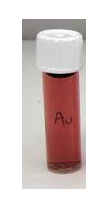Material:
- Sodium alginate
- Sodium chloride
- Coca-Cola
- Beaker
- Pipet
- Strainer
Procedure:
- We need to mix the sodium chloride with the sodium alginate (contain the coca-cola).
- You will see a gelatinous form that precipitated and you will have the pill.
- Take the strainer and the coca-cola is inside.
Process of nanoencapsulation:
APLICATIONS OF NANOENCAPSULATION:
1. The first aplication is with the food industry: incorporation food ingredients, enzymes, cells or other materials in small devices (nano- scale or micrometer). These devices are obtained
coating or Entrapment of a material or a mixture.
2. In the second aplication we see the development of new materials, including biomaterials and biocomposites for food, pharmaceutical, biomedical, chemical and hydrocarbon packaging applications.
3. Development of new micro and nanoencapsulation systems for the protection of various bioactive ingredients
Hi, my name is Dania Llop, I'm studing first of batxillerat and in this blog i will put some experiments that we will do in the class.
Monday, April 25, 2016
BIOTEST
Material:
- Nanoparticles of gold
- Watch glass
- Distilled water
- Water with sugar
- NaCl
Procedure:
We need to know that the nanoparticles of gold change their color when we change the aggregation.
- Take the watch glasses with nanoparticles.
- In the first one put distilled water (don't change the color).
- In the second one put water with sugar (don't change the color).
- In the third one put NaCl (the color change).
Question:
Why change the color when we put NaCl?
Because the nanoparticles of gold do the aggregation (recombination of the nanoparticles).
- Nanoparticles of gold
- Watch glass
- Distilled water
- Water with sugar
- NaCl
Procedure:
We need to know that the nanoparticles of gold change their color when we change the aggregation.
- Take the watch glasses with nanoparticles.
- In the first one put distilled water (don't change the color).
- In the second one put water with sugar (don't change the color).
- In the third one put NaCl (the color change).
Question:
Why change the color when we put NaCl?
Because the nanoparticles of gold do the aggregation (recombination of the nanoparticles).
BIOTOXICITY
Material:
- Nanoparticles of silver
- Sugar and yeast
- Distilled water
- Erlenmeyer
- Hot plate
- Ballon
- Spatula
- Pipet
Procedure:
We need to know that the nanoparticles damage the live cells and toxit activity.
- Take three erlenmeyer:
1r: Control: One spoon of sugar, yeast and water.
2n: The same quantity of sugar, yeast, water and 1ml of nanoparticles of silver.
3r: The same quantity of sugar, yeast, water and 3ml of nanoparticles.
- Put the Erlenmeyers in the hot plate.
Conclusions:
We see that the experiment produce CO2 and we see that the ballon inflate.
Question:
Why not inflate the last ballon?
Because the nanoparticles kill the yeast and there isn't fermentation.
- Nanoparticles of silver
- Sugar and yeast
- Distilled water
- Erlenmeyer
- Hot plate
- Ballon
- Spatula
- Pipet
Procedure:
We need to know that the nanoparticles damage the live cells and toxit activity.
- Take three erlenmeyer:
1r: Control: One spoon of sugar, yeast and water.
2n: The same quantity of sugar, yeast, water and 1ml of nanoparticles of silver.
3r: The same quantity of sugar, yeast, water and 3ml of nanoparticles.
- Put the Erlenmeyers in the hot plate.
Conclusions:
We see that the experiment produce CO2 and we see that the ballon inflate.
Question:
Why not inflate the last ballon?
Because the nanoparticles kill the yeast and there isn't fermentation.
NANOSCALE
Material:
- Two beakers
- Mortes
- Two effervescent tablet
Procedure:
1. We need to take the two effervescent tablet.
2. We need to brake one of the effervescent tablet using the morter.
3. In each beaker put a little bit of water.
4. In the first beaker put the effervescent tablet, and in the second beaker put the broken one.
Conclusions:
We can see that the broken effervescent tablet have a quickly reaccion than the other one.
Question:
Why the crushed table was faster?
Because there are more surface and the nanoparticles react more quickly.
- Two beakers
- Mortes
- Two effervescent tablet
Procedure:
1. We need to take the two effervescent tablet.
2. We need to brake one of the effervescent tablet using the morter.
3. In each beaker put a little bit of water.
4. In the first beaker put the effervescent tablet, and in the second beaker put the broken one.
Conclusions:
We can see that the broken effervescent tablet have a quickly reaccion than the other one.
Question:
Why the crushed table was faster?
Because there are more surface and the nanoparticles react more quickly.
Subscribe to:
Comments (Atom)





